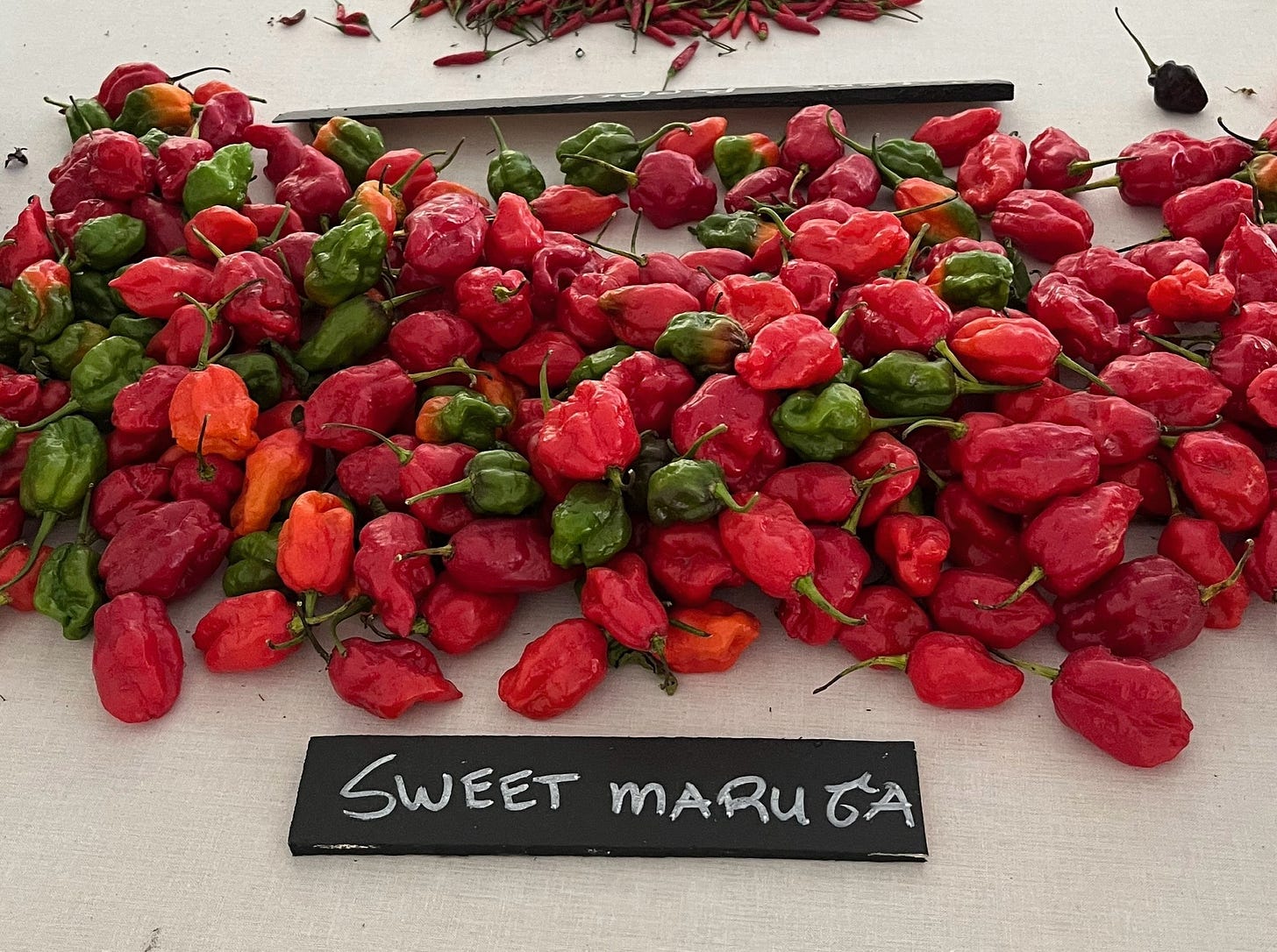Baker Creek Heirloom Seed
The largest heirloom seed company in North America, Baker Creek was founded in Missouri in 1998 by Jere Gettle, then a teenager. For 25 years it has held annual festivals where varieties are displayed, visitors informed by expert speakers, and packets of vegetable, herb, and flower seeds sold. The campus in Mansfield, MO, has a designedly rural retro look, yet the agricultural infrastructure is decidedly up to date. While a goodly portion of the 1,000 items listed in the annual catalog are grown on catalog, certain items are grown in Jamaica, California, and the Pacific Northwest.
Baker Creek prides itself on the number of items offered that were 19th-century flower or vegetable creations. It does not aspire to offer the older landraces of grain—winter barley, oats, wheat, rice, millet—yet does list numbers of heirloom corn cultigens (country gentleman) and modern (glass gem). The corn offerings reveal a signal feature of Baker Creek’s sales emphasis. Offerings that are visually striking prevail over those with other virtues (early maturation, drought tolerance, wholesome flavor). Hence we don’t see the best performing heirloom dent corn in the world for various soil types—Hickory King—or any classic southern dent corns, but do see the more colorful of the Native flint and popcorn types. The two heirloom sweets—Country Gentlemen and Golden Bantam improved—taste nowhere as well balanced as Stowell’s Evergreen or Silver Queen, two classic white sweet varieties. A supersweet offering appears, a 20th century hybrid cultivar.
Catching a customer’s eyes has always been the desire at the produce stand, and so I suppose in seed catalogs. Virtues that reveal themselves via other sense—smell, taste, or feel—take a back seat. Fortunately in catalogs the textual description can make up for the visual bias in selling. Baker Creek secured one of the finest historians of vegetables, William Woys Weaver (of Roughwood Seeds in PA) to enliven the catalog with commentary. His essays in the peppers section of the 2025 catalog are informative and memorable, as are most of his many books on vegetables. Weaver has a global grasp of vegetable history, so tells of the transits of items from their places of origin to North America. Baker Creek has always displayed a similar cosmopolitan, rather than strictly Nativist and nationalist, ben in its offerings.
Flowers and herbs make up a healthy chunk of the catalog. There are items you often don’t see at your local garden centers—Stocks for instance. If a newly bred variety has a particularly compelling visual character (the Red Raven Cockscomb for example), it finds a place among the old classic flowers.
So what are the strengths of the catalog—the things the Baker Creek does better than other seed companies? Foremost is the offering of cucurbits—squashes, gourds, and melons. Many ancient and rare items appear, including Native landraces. Whenever Baker Creek holds an heirloom festival, the tables of multivarious pumpkins, watermelons, and squashes draw the most spectators. Peppers stand second—including classic sweet and pimento types, South American seasoning peppers, and hots, including the latest novelties such as the purple Carolina Reaper. Other companies offer more tomatoes, beans, root vegetables, Asian varieties, and brassica types. No one supplies more peppers and squashes. I do think the range of carrots will please many gardeners, particularly since varieties with different colors have become the rage at the produce counter.
As I draw this series of meditations on heirloom seed companies to a close, I should note that I have contributed information and seed for varieties to all of the profiled companies except Kitagawa and remain in contact with the curators of the companies to offer aid if they need it in terms of ascertaining the history of items offered. I do not take any remuneration for these contributions, offering my expertise and seeds as a pro bono contribution to the preservation of our agricultural heritage.





Thank you for the series on heirloom seed companies, I enjoyed it a lot. I am curious why you did not include Seed Savers Exchange, not a traditional style seed company but an amazing selection of vegetable seeds and much more.